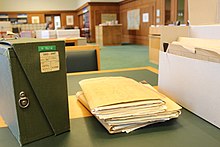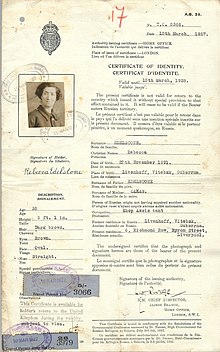
The League of Nations was the first worldwide intergovernmental organisation whose principal mission was to maintain world peace. It was founded on 10 January 1920 by the Paris Peace Conference that ended the First World War. The main organization ceased operations on 20 April 1946 but many of its components were relocated into the new United Nations.

The National Archives and Records Administration (NARA) is an "independent federal agency of the United States government within the executive branch", charged with the preservation and documentation of government and historical records. It is also tasked with increasing public access to those documents which make up the National Archives. NARA is officially responsible for maintaining and publishing the legally authentic and authoritative copies of acts of Congress, presidential directives, and federal regulations. NARA also transmits votes of the Electoral College to Congress. It also examines Electoral College and constitutional amendment ratification documents for prima facie legal sufficiency and an authenticating signature.

The Library of Congress National Digital Library Program (NDLP) is assembling a digital library of reproductions of primary source materials to support the study of the history and culture of the United States. Begun in 1995 after a five-year pilot project, the program began digitizing selected collections of Library of Congress archival materials that chronicle the nation's rich cultural heritage. In order to reproduce collections of books, pamphlets, motion pictures, manuscripts and sound recordings, the Library has created a wide array of digital entities: bitonal document images, grayscale and color pictorial images, digital video and audio, and searchable e-texts. To provide access to the reproductions, the project developed a range of descriptive elements: bibliographic records, finding aids, and introductory texts and programs, as well as indexing the full texts for certain types of content.

Digitization is the process of converting information into a digital format. The result is the representation of an object, image, sound, document, or signal obtained by generating a series of numbers that describe a discrete set of points or samples. The result is called digital representation or, more specifically, a digital image, for the object, and digital form, for the signal. In modern practice, the digitized data is in the form of binary numbers, which facilitates processing by digital computers and other operations, but digitizing simply means "the conversion of analog source material into a numerical format"; the decimal or any other number system can be used instead.

Library and Archives Canada is the federal institution, tasked with acquiring, preserving, and providing accessibility to the documentary heritage of Canada. The national archive and library is the fifth largest library in the world. The LAC reports to the Parliament of Canada through the Minister of Canadian Heritage.
In library and archival science, digital preservation is a formal endeavor to ensure that digital information of continuing value remains accessible and usable. It involves planning, resource allocation, and application of preservation methods and technologies, and it combines policies, strategies and actions to ensure access to reformatted and "born-digital" content, regardless of the challenges of media failure and technological change. The goal of digital preservation is the accurate rendering of authenticated content over time. The Association for Library Collections and Technical Services Preservation and Reformatting Section of the American Library Association, defined digital preservation as combination of "policies, strategies and actions that ensure access to digital content over time." According to the Harrod's Librarian Glossary, digital preservation is the method of keeping digital material alive so that they remain usable as technological advances render original hardware and software specification obsolete.
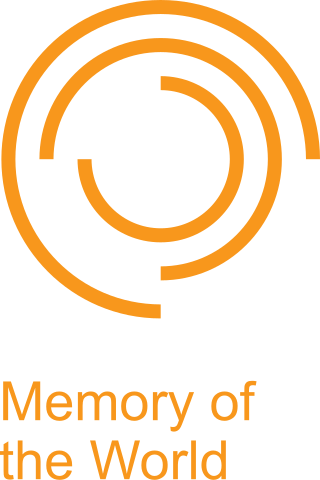
UNESCO's Memory of the World (MoW) Programme is an international initiative launched to safeguard the documentary heritage of humanity against collective amnesia, neglect, decay over time and climatic conditions, as well as deliberate destruction. It calls for the preservation of valuable archival holdings, library collections, and private individual compendia all over the world for posterity, the reconstitution of dispersed or displaced documentary heritage, and increased accessibility to, and dissemination of, these items.

The Arolsen Archives – International Center on Nazi Persecution formerly the International Tracing Service (ITS), in German Internationaler Suchdienst, in French Service International de Recherches in Bad Arolsen, Germany, is an internationally governed centre for documentation, information and research on Nazi persecution, forced labour and The Holocaust in Nazi Germany and its occupied regions. The archive contains about 30 million documents from concentration camps, details of forced labour, and files on displaced persons. ITS preserves the original documents and clarifies the fate of those persecuted by the Nazis. The archives have been accessible to researchers since 2007. In May 2019 the Center uploaded around 13 million documents and made it available online to the public. The archives are currently being digitised and transcribed through the crowdsourcing platform Zooniverse. As of September 2022, approximately 46% of the archives have been transcribed.
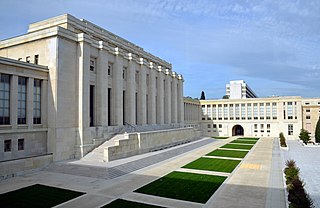
The United Nations Office at Geneva in Geneva, Switzerland, is one of the four major offices of the United Nations where numerous different UN agencies have a joint presence. The main UNOG administrative offices are located inside the Palais des Nations complex, which was originally constructed for the League of Nations between 1929 and 1938.

The Dag Hammarskjöld Library is a library on the grounds of the headquarters of the United Nations, located in the Turtle Bay/East Midtown neighborhood of Manhattan in New York City. It is connected to the Secretariat and Conference buildings through ground level and underground corridors. It is named after Dag Hammarskjöld, the second Secretary-General of the United Nations. The library was founded in 1946, and the current library building was completed in 1961.
The Metadata Encoding and Transmission Standard (METS) is a metadata standard for encoding descriptive, administrative, and structural metadata regarding objects within a digital library, expressed using the XML schema language of the World Wide Web Consortium (W3C). The standard is maintained as part of the MARC standards of the Library of Congress, and is being developed as an initiative of the Digital Library Federation (DLF).

The Biodiversity Heritage Library (BHL) is the world’s largest open access digital library for biodiversity literature and archives. BHL operates as a worldwide consortium of natural history, botanical, research, and national libraries working together to address this challenge by digitizing the natural history literature held in their collections and making it freely available for open access as part of a global "biodiversity community". The BHL consortium works with the international taxonomic community, publishers, bioinformaticians, and information technology professionals to develop tools and services to facilitate greater access, interoperability, and reuse of content and data. BHL provides a range of services, data exports, and APIs to allow users to download content, harvest source data files, and reuse materials for research purposes. Through taxonomic intelligence tools developed by Global Names Architecture, BHL indexes the taxonomic names throughout the collection, allowing researchers to locate publications about specific taxa. In partnership with the Internet Archive and through local digitization efforts, BHL's portal provides free access to hundreds of thousands of volumes, comprising over 59 million pages, from the 15th-21st centuries.
A digital library, also called an online library, an internet library, a digital repository, a library without walls, or a digital collection is an online database of digital objects that can include text, still images, audio, video, digital documents, or other digital media formats or a library accessible through the internet. Objects can consist of digitized content like print or photographs, as well as originally produced digital content like word processor files or social media posts. In addition to storing content, digital libraries provide means for organizing, searching, and retrieving the content contained in the collection. Digital libraries can vary immensely in size and scope, and can be maintained by individuals or organizations. The digital content may be stored locally, or accessed remotely via computer networks. These information retrieval systems are able to exchange information with each other through interoperability and sustainability.
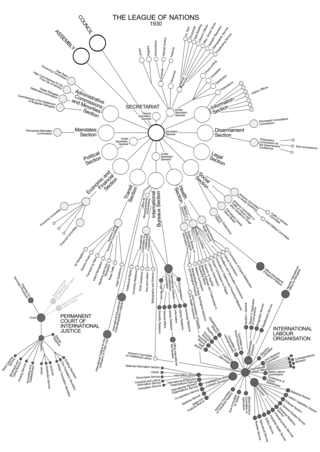
The League of Nations was established with three main constitutional organs: the Assembly; the Council; the Permanent Secretariat. The two essential wings of the League were the Permanent Court of International Justice and the International Labour Organization.
The United Nations Dispute Tribunal (UNDT) is the court of first instance in the internal justice system of the United Nations. It became operational on 1 July 2009. The UNDT "hears and decides cases" filed by current and former staff members "appealing administrative decisions alleged to be in non-compliance with their terms of appointment or contract of employment". The staff members as well as the Administration have a "right to appeal the judgments of the UNDT to the United Nations Appeals Tribunal (UNAT)". In order to ensure the independence of this organ, it is composed not of officials of the Organization, but by judges appointed by the Member States of the United Nations through the General Assembly, from which UNDT derives its mandate.
The Punjab Archives was established in 1924. It preserves Government records and provides access to its vast holdings of cultural and historical materials to researchers from home and abroad. The records in the Punjab Archives date back to 17th century and cover the Pre-Colonial, Colonial and Post-Independence era in South Asia. The archival holdings number more than seven million files of unique documents and rare books. These records officially belong to Punjab Government, dating back to the year 1629. Its mission is to drive openness, cultivate public participation and make them available to Government officials. The access to the record will be expanded to general public through a system of nation-wide digitization.

The archives of the International Committee of the Red Cross (ICRC) are based in Geneva and were founded in 1863 at the time of the ICRC's inception. It has the dual function to manage both current records and historical archives. The general historical archives are openly accessible to the general public up to 1975.

The library of the International Committee of the Red Cross (ICRC) – in French: la bibliothèque du Comité international de la Croix-Rouge (CICR) – is a public library based at the headquarter of the international organization in Geneva, Switzerland. It was apparently founded around the time of the ICRC's inception in 1863.

The Library of the Economic Commission for Latin America and the Caribbean was established in 1948 as part of the creation of the Economic Commission for Latin America and the Caribbean; this coincided with the inauguration of the Economic Commission for Latin America by the United Nations, in support of its mandate in the region. The Library has four branches: the Hernán Santa Cruz Library in Santiago, the Centro de Recursos de Información y Distribución de Documentos in México D.F., the Raúl Prebisch Library in Brasilia and the Caribbean Knowledge Management Centre in Port of Spain. These four form the ECLAC Library.
